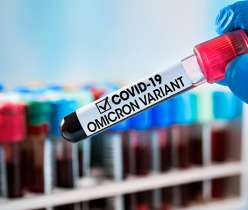Many children with juvenile idiopathic arthritis (JIA) delay diagnosis, but according to healthcare experts, early treatment leads to better long-term results. This article discusses the recommended treatment options, arthritis prevention tips, and ways to manage arthritis in the hands/fingers.
Specific therapeutic agents
The management of JIA needs to be provided by a team of healthcare experts, including doctors, physiotherapists, psychologists, and nurses working closely with paediatricians. NSAIDS (non-steroid anti-inflammatory drugs) have been used in treating JIA for decades and continue to play anti-inflammatory and analgesic roles. They are the standard treatment in primary care as they are well tolerated and provide reasonable symptom relief. Naproxen orally twice daily is often advised for first-line treatment because of the convenience of twice-daily dosing, and it is also available as a liquid solution.
Another NSAID, ibuprofen, is more readily available than naproxen. Still, when used as an anti-inflammatory agent in treating JIA, it should be administered in higher doses than when used for antipyretic purposes. For rheumatic disease, ibuprofen should be dosed at 30 to 40 kg/kg daily in three to four divided doses. Other common alternative NSAIDs include diclofenac, indomethacin, and diclofenac. For the treatment of arthritis, NSAIDs should be given regularly to provide the maximum anti-inflammatory effect. Those taking NSAIDs regularly should be prescribed a proton pump inhibitor to treat, prevent, and alleviate injury to the gastrointestinal tract.
Steroid injections
Joint shots are a safe and effective treatment option for managing JIA. The drug is well tolerated and usually performed anaesthetic for younger children or sedation for older children. The treatment choice is triamcinolone hexacetonide, which is longer acting than the alternative solution, with a mean duration of response of over twelve months. Joint shots are used frequently to treat oligoarticular disease (in which the body’s immune system mistakenly attacks the joints), where they may be enough as monotherapy, thus sparing the requirement for regular systemic medication. Side effects of the joint injections include atrophy at the injection site and septic arthritis. The risk of septic arthritis reduces when used under sterile conditions.
Disease-modifying antirheumatic drugs
The disease-modifying antirheumatic drug (DMARD) methotrexate has been used to treat JIA for decades and remains a safe and effective treatment when dosed and monitored appropriately. It is given to children with multiple active joints, those with activity in joints, or those with joint activity that is not readily injectable, especially the temporomandibular joint and the cervical spine. It also plays a role in treating eye inflammation inadequately controlled by steroid drops. Methotrexate is given once per week via oral or subcutaneous route.
The use of methotrexate is limited because of two major factors; first is effectiveness – a significant population of children show inadequate response to methotrexate. The other is tolerability, especially vomiting and nausea, which can be serious and require careful management. The drug may also cause liver dysfunction. These abnormalities are usually mild and resolve independently upon temporarily discontinuing the medicine, but its safe use requires regular monitoring. The effect of these short treatment interruptions can limit the utility of the drug if the child starts to flare in between. The mode of this drug is poorly understood, but it is believed to work by modifying adenosine levels. It is known to interfere with folate metabolism, so it is usually co-administered with folic acid to decrease side effects. Folic acid may be administered daily or weekly, but it’s traditionally not given on the same day as methotrexate due to the risk of reducing methotrexate effectiveness.
Other DMARDs used to treat JIA include Sulfasalazine, ciclosporin, leflunomide, and hydroxychloroquine.
Tips to prevent arthritis in hands and finger
Pain, stiff fingertips, and swelling are commonly reported in patients with JIA. CDC or the Centres for Arthritis recommend avoiding activities that strain joints. There is no sure way to prevent arthritis in fingertips. But you can take possible steps to reduce stiffness and painful joints. Low-impact exercise is also one best ways to stop arthritis of the hands and fingers. Bending one finger at a time onto the palm can help restore joint movement. Hold each position for a few seconds, then release and repeat the next finger. Making thumb bends and squeezes can relieve stiffness in the fingers and treat arthritis in fingertips.
Self-management for JIA
Self-management skills help to deal with joint pain and disability successfully.
Caregivers can support children with juvenile arthritis; learn these tips for rheumatoid arthritis, which can also help limit the disease’s effects.
-
- Exercise can help improve mood, decrease pain, maintain proper weight, improve blood flow, promote physical fitness, and increase independence. Working out in a warm water pool is an ideal choice. Physical therapy is also effective in restoring joint movement and increasing strength.
- Adequate rest is extremely important. Rheumatoid arthritis may contribute to tiredness and muscle weakness. Relaxation techniques are also effective in controlling pain. Some people find stress reduction helpful.
- Assistive devices are also available to reduce stress on certain joints. Devices like braces and canes can be utilized to reduce stress on the knees. Jar grippers or other gadgets also reduce stress on the hands’ small joints.
- Stick to a healthy weight. Extra weight can put pressure on weight-bearing joints like knees and hips, which increases the risk of swelling and inflammation. Follow an exercise regime that is not too intense and includes low-impact stretching.
Treating JIA is a long-range collaborative effort, the success of which will largely depend on early diagnosis along with home care management and parental cooperation.




